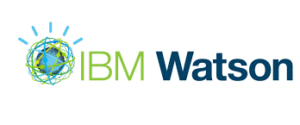

IBM Watson Analytics
The watsonx AI and data platform includes three core components and a set of AI assistants designed to help you scale and accelerate the impact of AI with trusted data across your business.
IBM Watson Analytics is a sophisticated data analysis and visualization tool designed to make advanced analytics accessible to a wide range of users. Leveraging artificial intelligence (AI) and machine learning, Watson Analytics offers intuitive, self-service data exploration, predictive analytics, and visual storytelling capabilities. Here’s a detailed description of IBM Watson Analytics:
Key Features
1. Data Preparation
– Automated Data Cleaning: Watson Analytics simplifies data preparation by automatically detecting and correcting errors, inconsistencies, and missing values.
– Data Enrichment: Enhance your data by integrating additional data sources or leveraging Watson’s built-in data enrichment capabilities, such as geographic or demographic data.
2. Data Exploration
– Natural Language Querying: Users can interact with their data using natural language queries. Simply ask questions in plain English, and Watson Analytics will provide answers through visualizations and insights.
– Smart Data Discovery: Watson Analytics automatically uncovers patterns, correlations, and insights in your data, helping you identify key trends and anomalies without requiring deep technical expertise.
3.Visualization
– Intuitive Dashboards: Create interactive dashboards with drag-and-drop functionality, enabling users to visualize data through charts, graphs, and maps.
– Customizable Visuals: Choose from a wide range of visualization types and customize them to fit your specific needs, making it easy to present data in a compelling and understandable way.
4. Predictive Analytics
– Predictive Modeling: Watson Analytics uses advanced algorithms to build predictive models, allowing users to forecast future trends and outcomes based on historical data.
– Automated Insights: The platform automatically generates predictive insights, highlighting significant factors that influence outcomes and providing actionable recommendations.
5. Collaboration and Sharing
– Report Sharing: Easily share reports, dashboards, and insights with colleagues and stakeholders through web links or embedded visualizations.
– Collaborative Features: Collaborate on data analysis projects in real-time, allowing multiple users to work together on the same dataset and share insights seamlessly.
6. Integration and Data Sources
– Wide Range of Data Sources: Integrate data from various sources, including spreadsheets, databases, cloud services, and enterprise systems, ensuring a comprehensive view of your data landscape.
– APIs and Connectors: Utilize APIs and pre-built connectors to automate data import and export processes, facilitating seamless data integration.
Use Cases
1. Business Intelligence
– Performance Monitoring: Track key performance indicators (KPIs) and operational metrics to monitor business performance and identify areas for improvement.
– Trend Analysis: Analyze market trends, customer behavior, and sales data to inform strategic decision-making and business planning.
2. Marketing Analytics
– Campaign Effectiveness: Measure the success of marketing campaigns by analyzing engagement metrics, conversion rates, and ROI.
– Customer Segmentation: Segment customers based on behavior, demographics, and preferences to create targeted marketing strategies.
3. Sales and Revenue Analysis
– Sales Forecasting: Use predictive analytics to forecast sales trends and revenue projections, helping sales teams plan and allocate resources effectively.
– Revenue Optimization: Identify factors influencing revenue performance and implement strategies to optimize pricing, product offerings, and sales channels.
4. Operational Efficiency
– Resource Allocation: Analyze operational data to optimize resource allocation, streamline processes, and reduce costs.
– Risk Management: Identify potential risks and develop mitigation strategies by analyzing operational and financial data.
Benefits
– Ease of Use: Watson Analytics is designed to be user-friendly, with intuitive interfaces and natural language processing capabilities that make advanced analytics accessible to non-technical users.
– Scalability: The platform can handle large datasets and complex analyses, making it suitable for businesses of all sizes and industries.
– Actionable Insights: By automating data analysis and generating predictive insights, Watson Analytics helps businesses make data-driven decisions that drive growth and efficiency.
– Enhanced Collaboration: The ability to share and collaborate on data insights fosters a data-driven culture within organizations and improves cross-functional decision-making.
IBM Watson Analytics is a powerful tool for businesses looking to harness the power of AI and machine learning to gain deeper insights from their data. Its combination of automated data preparation, intuitive data exploration, advanced predictive analytics, and robust visualization capabilities makes it an invaluable resource for driving informed decision-making and achieving business objectives. Whether you’re in marketing, sales, operations, or business intelligence, Watson Analytics provides the tools you need to turn data into actionable insights.



